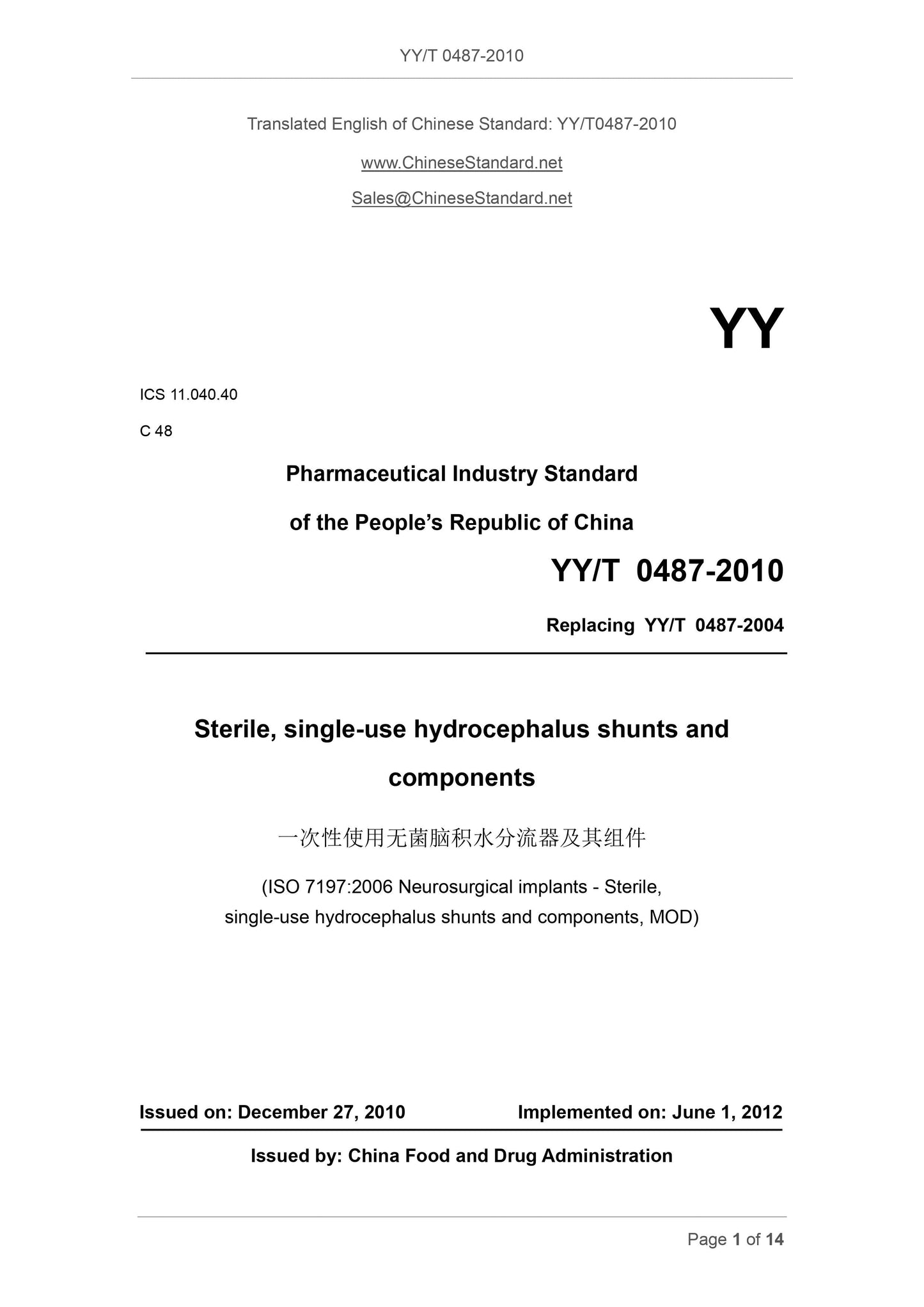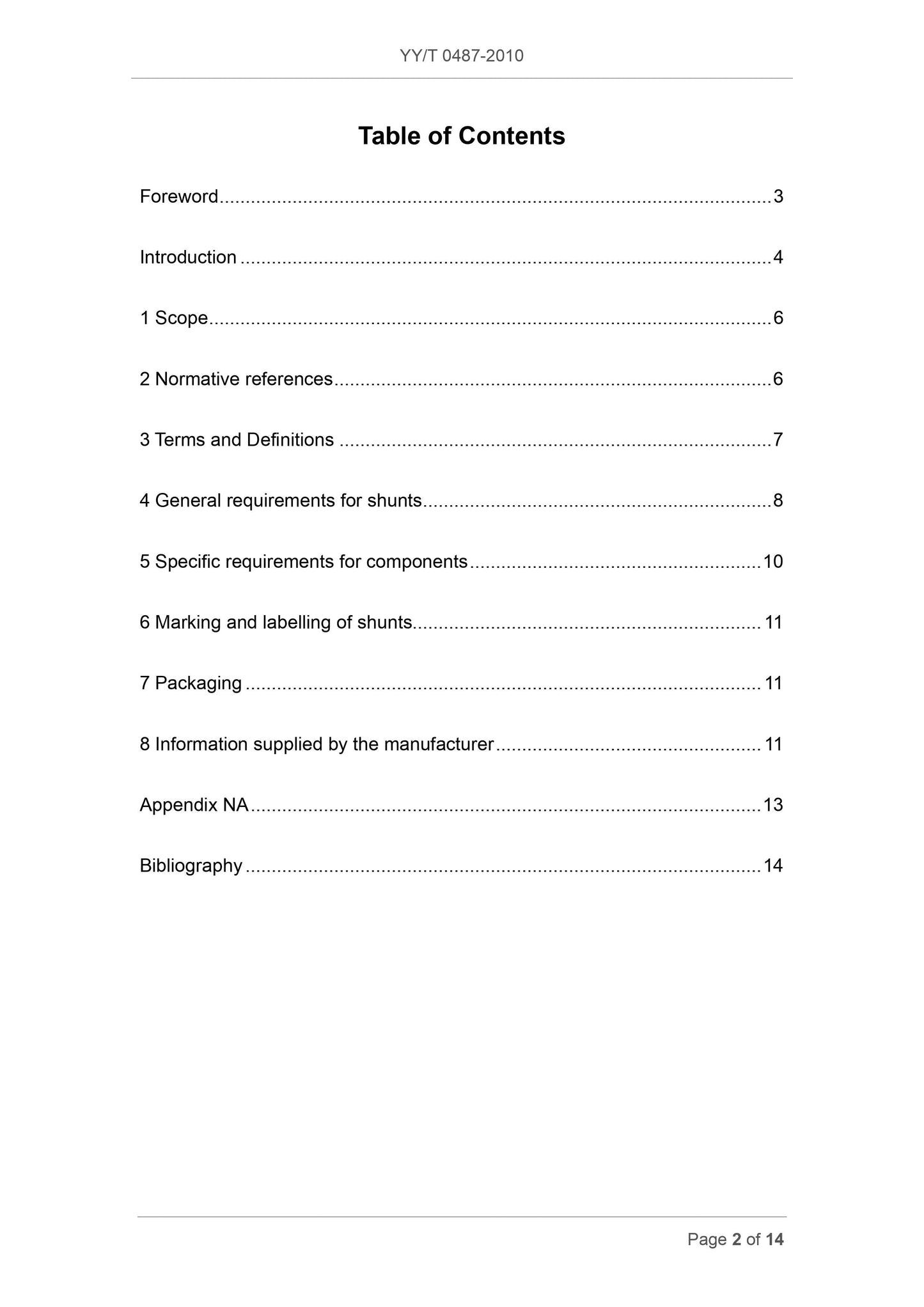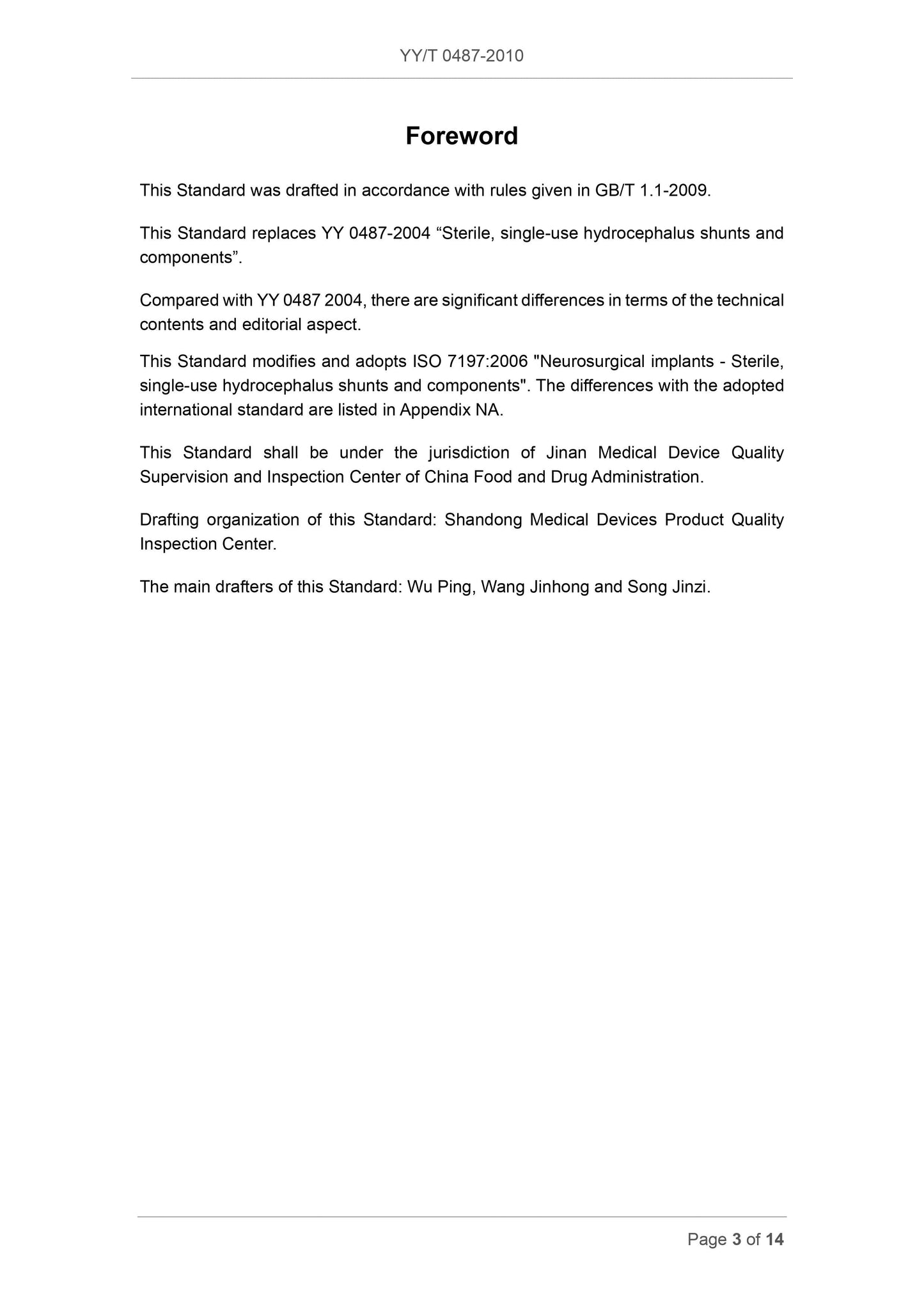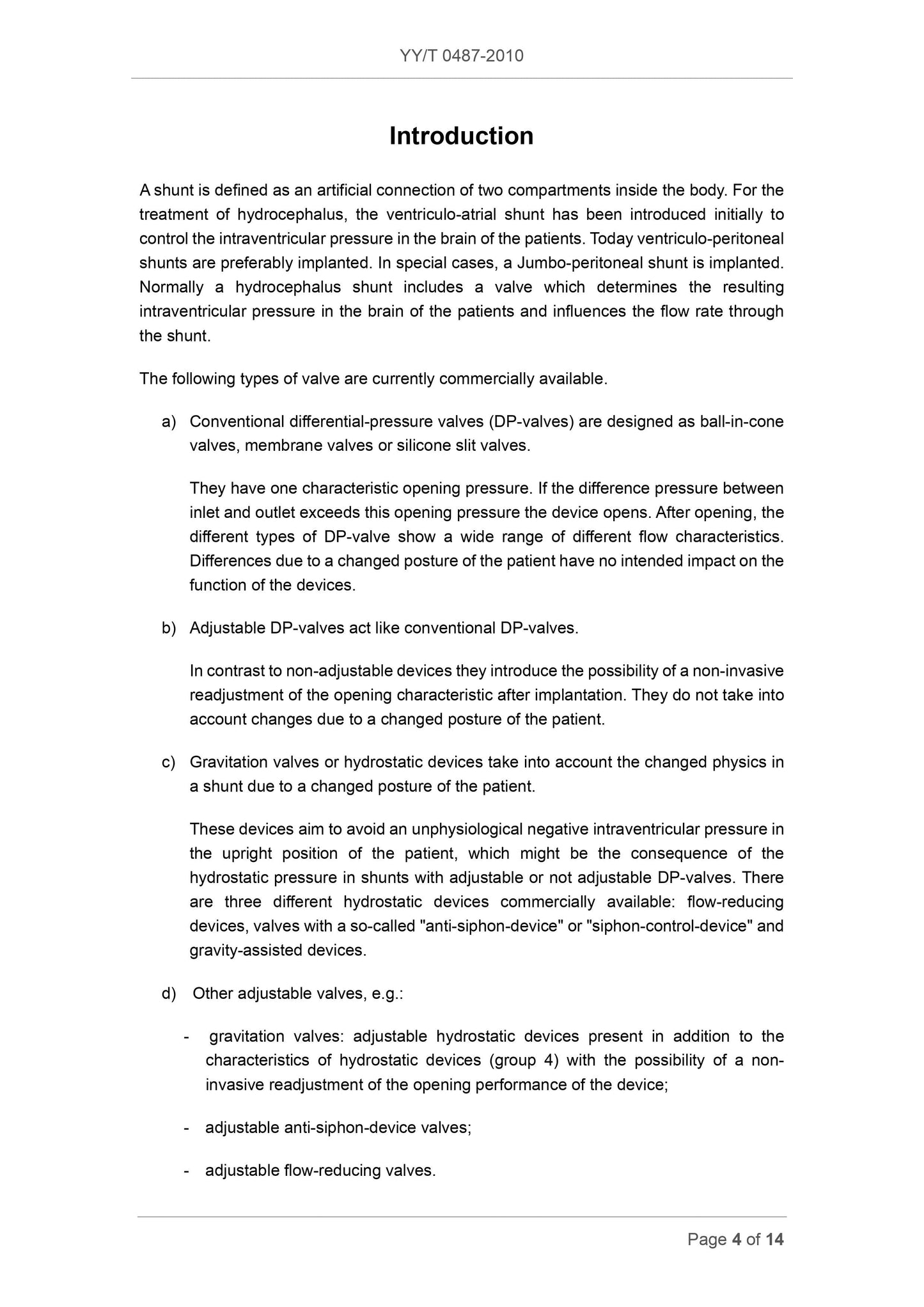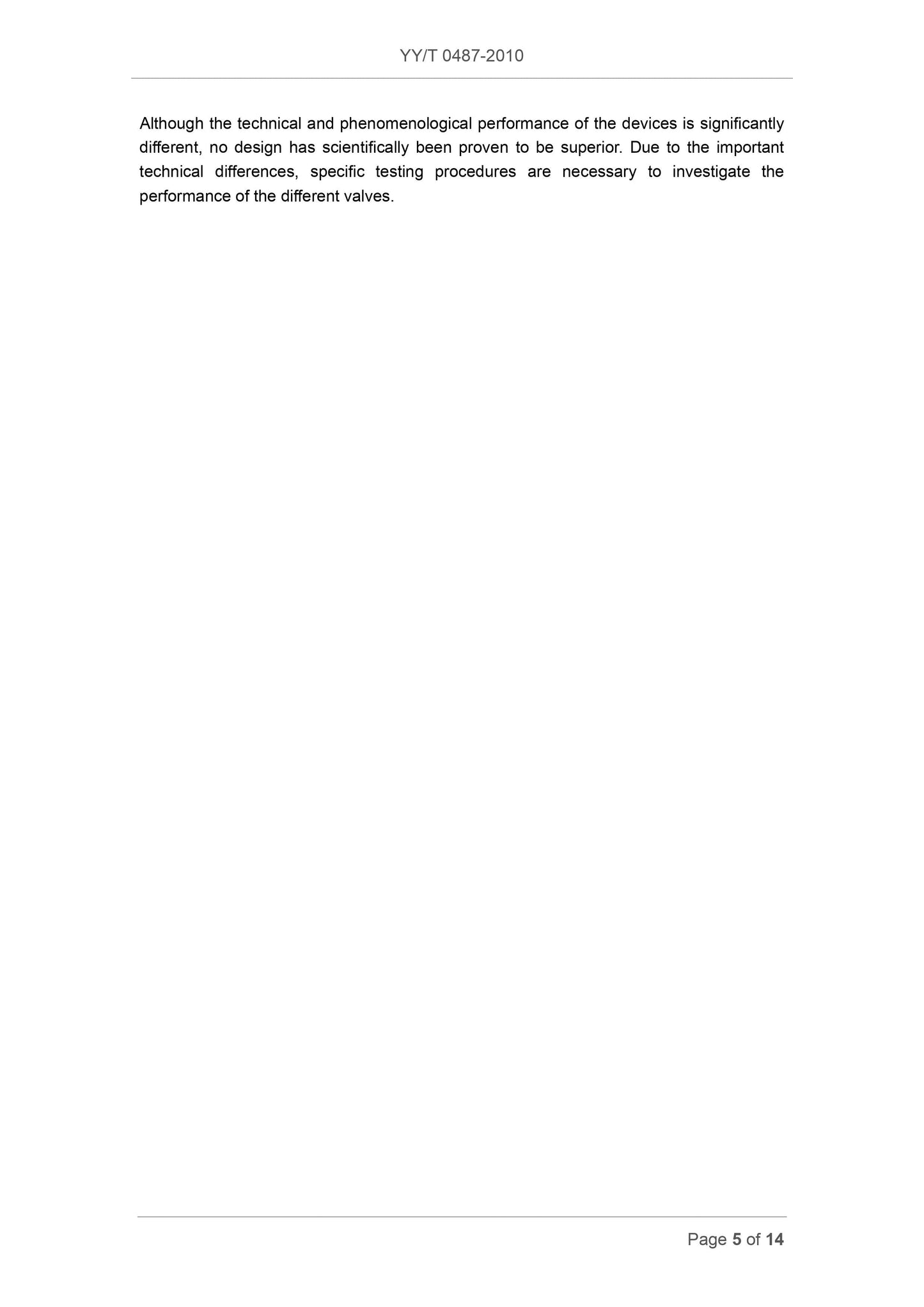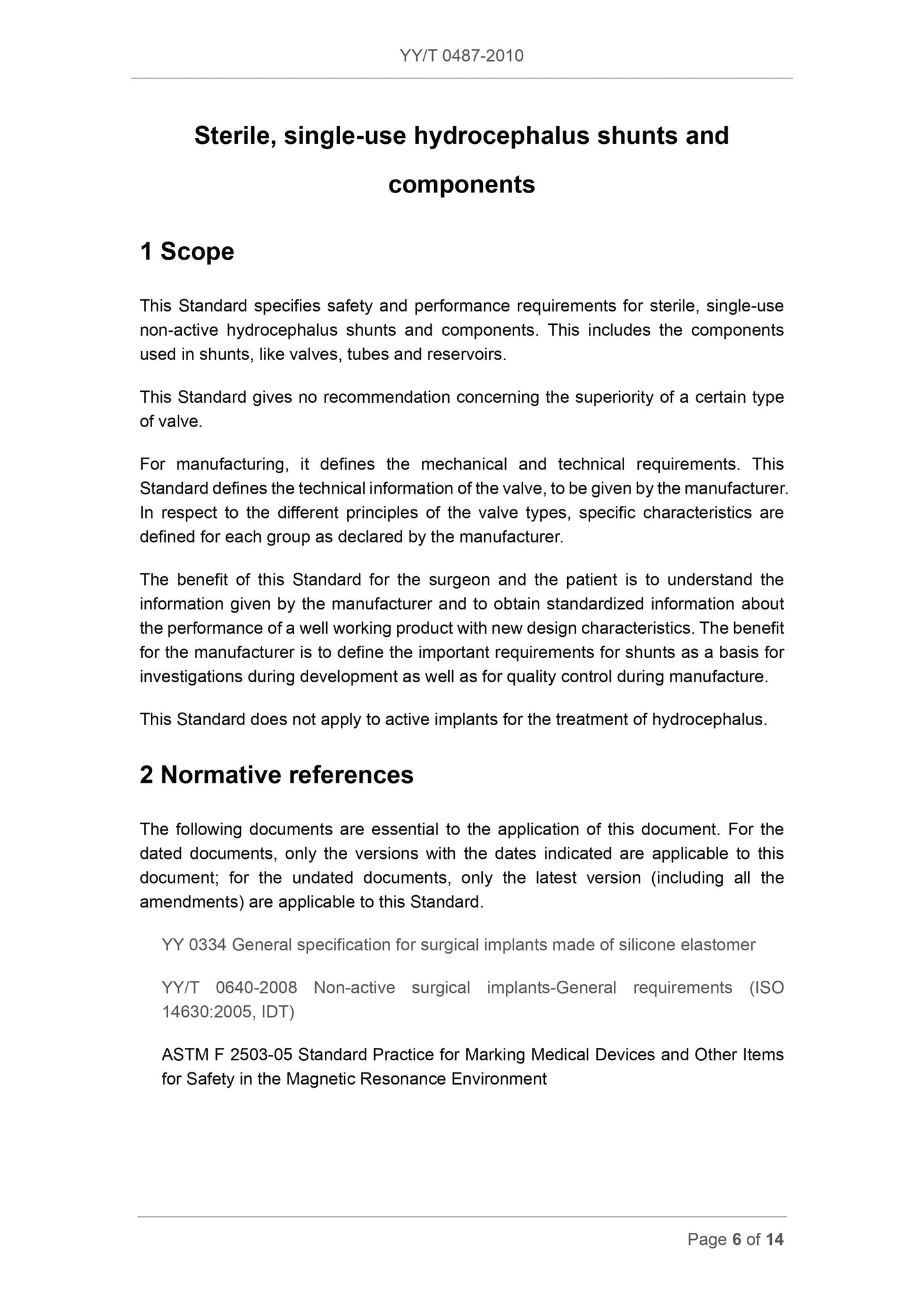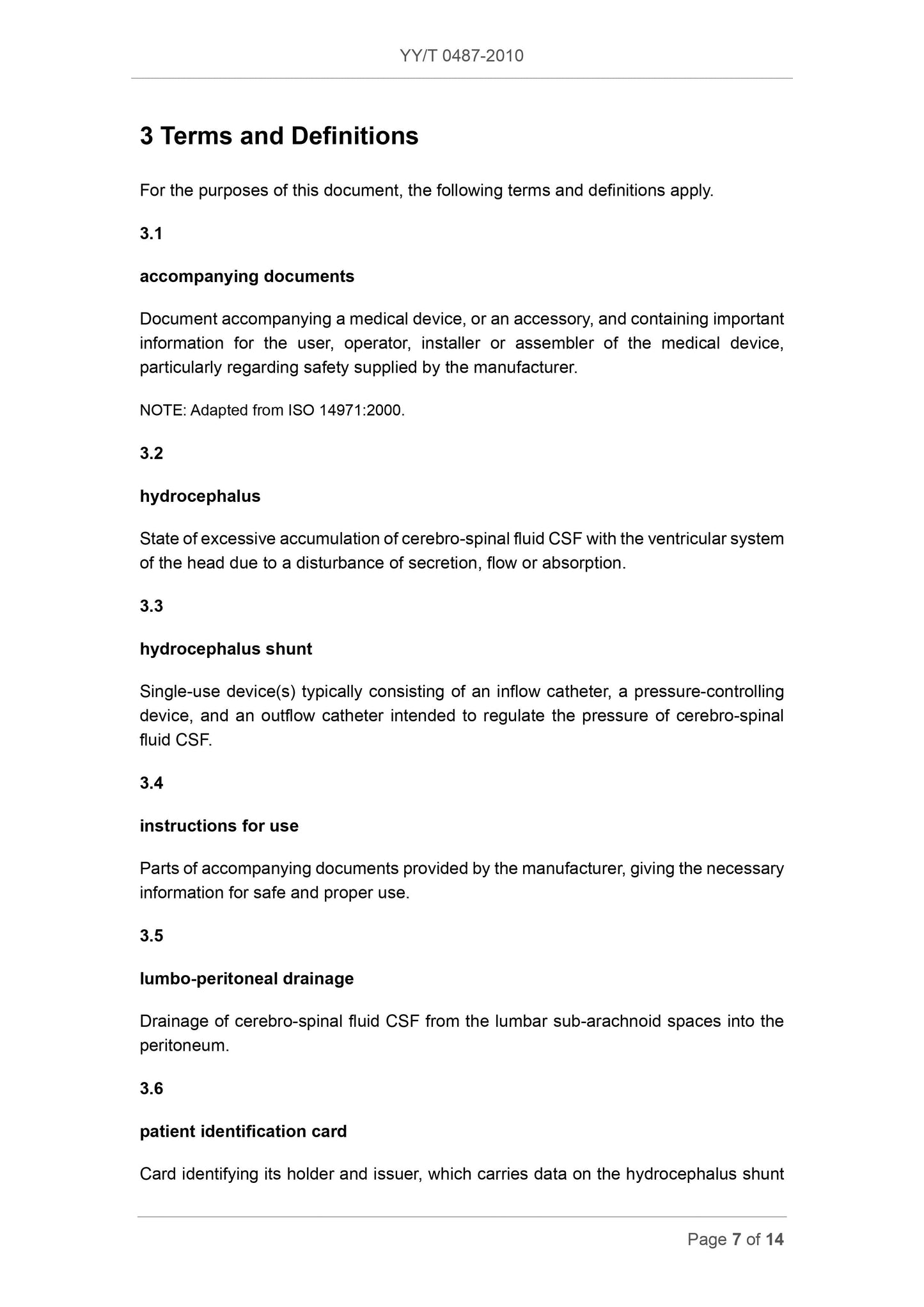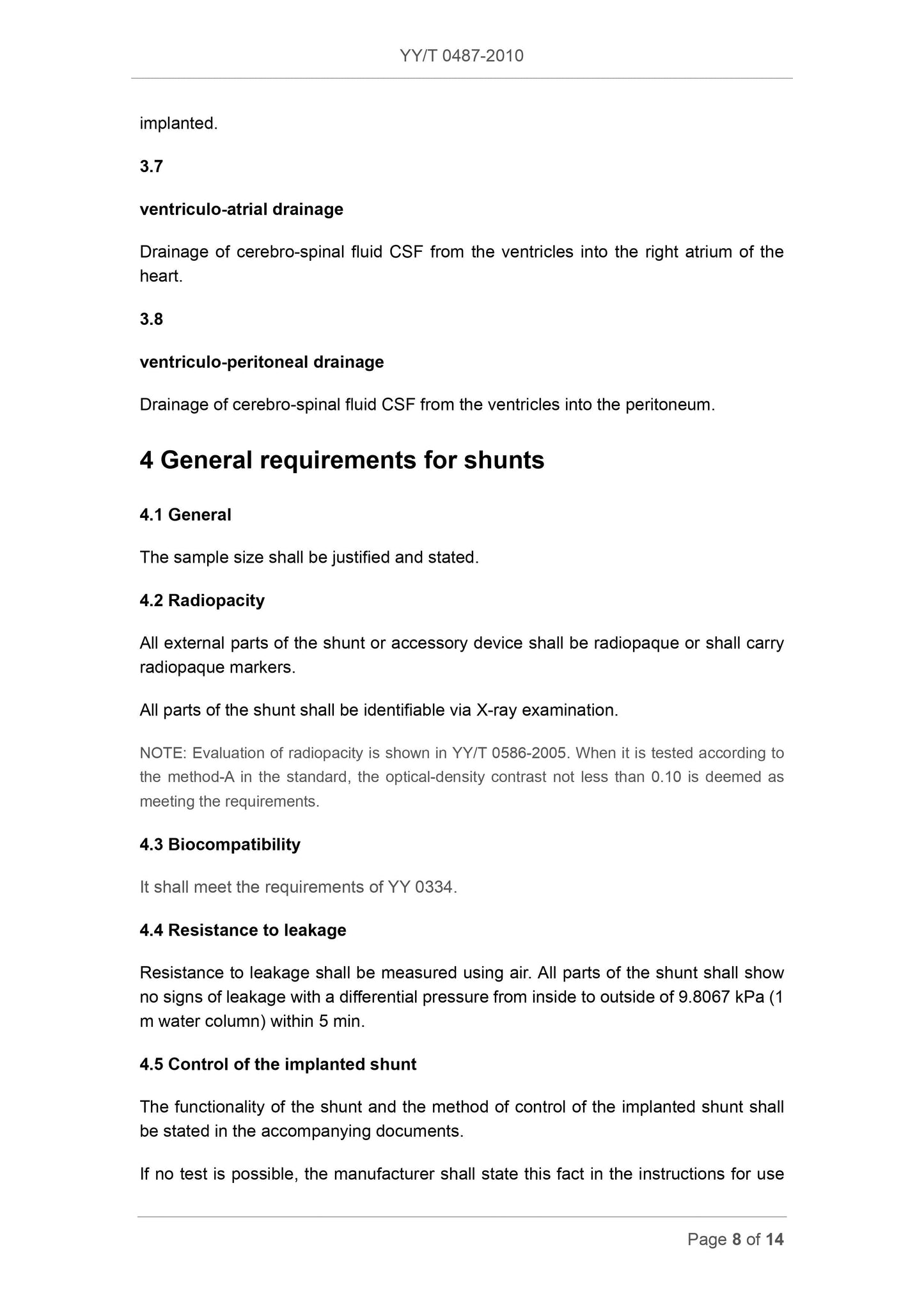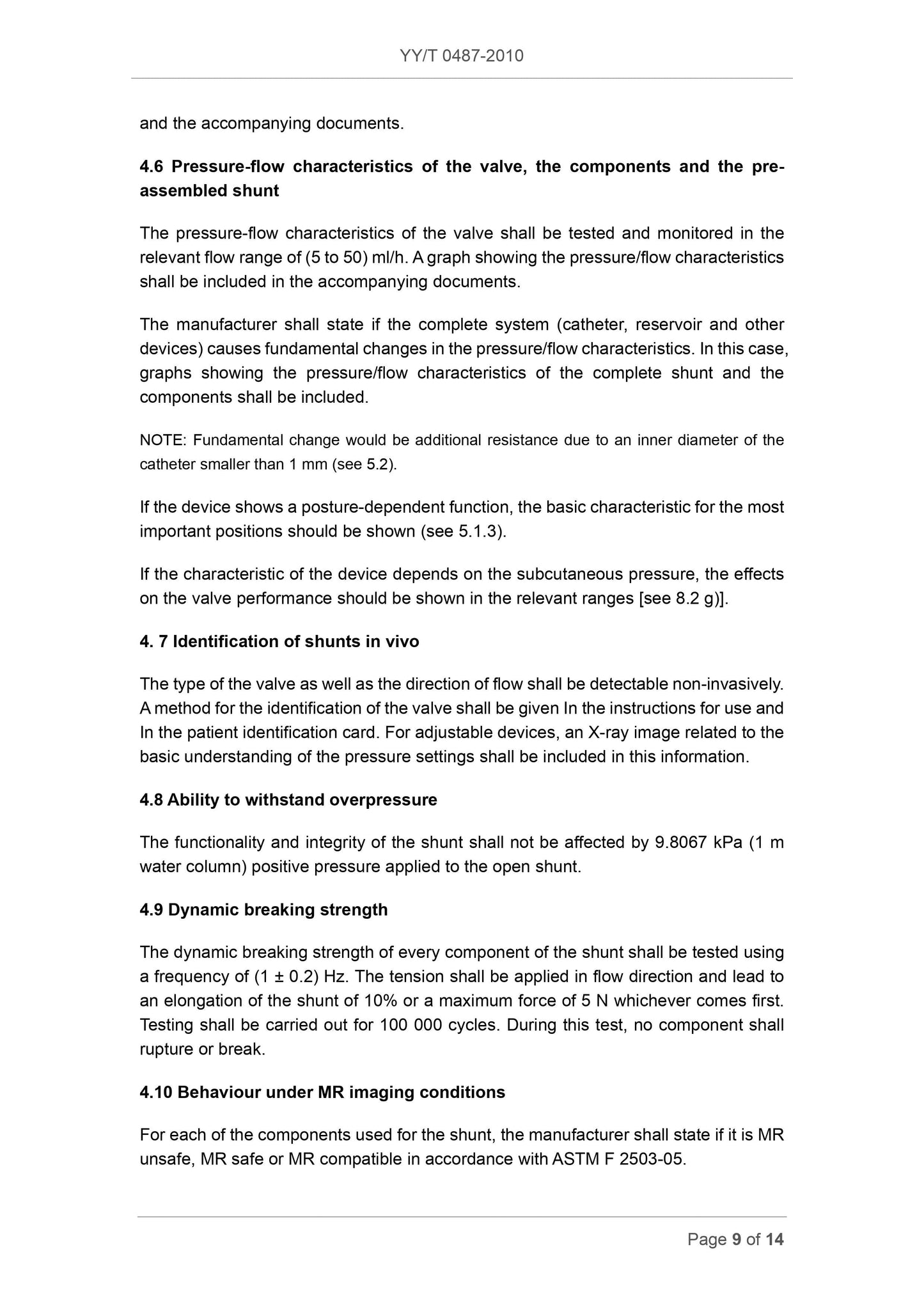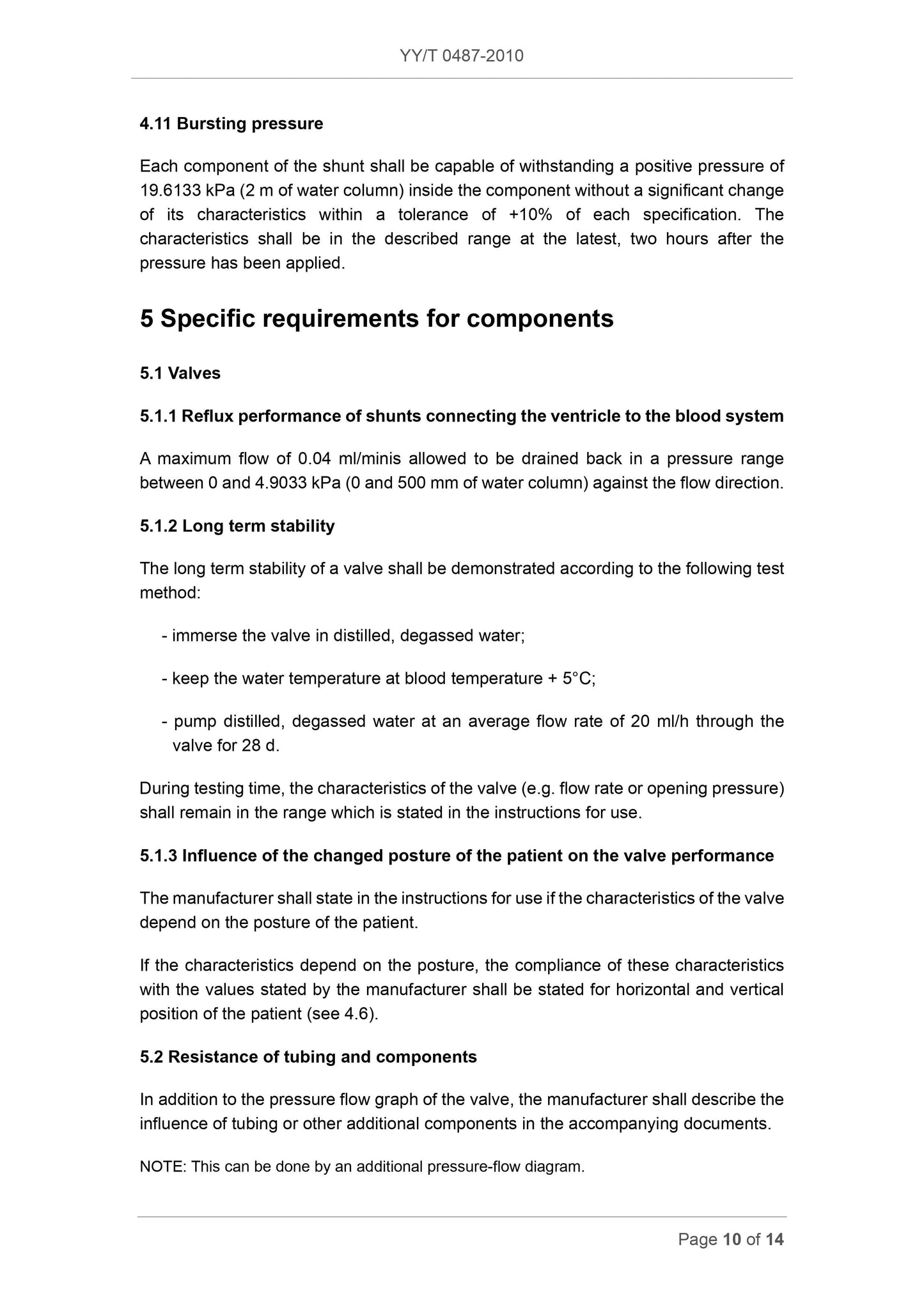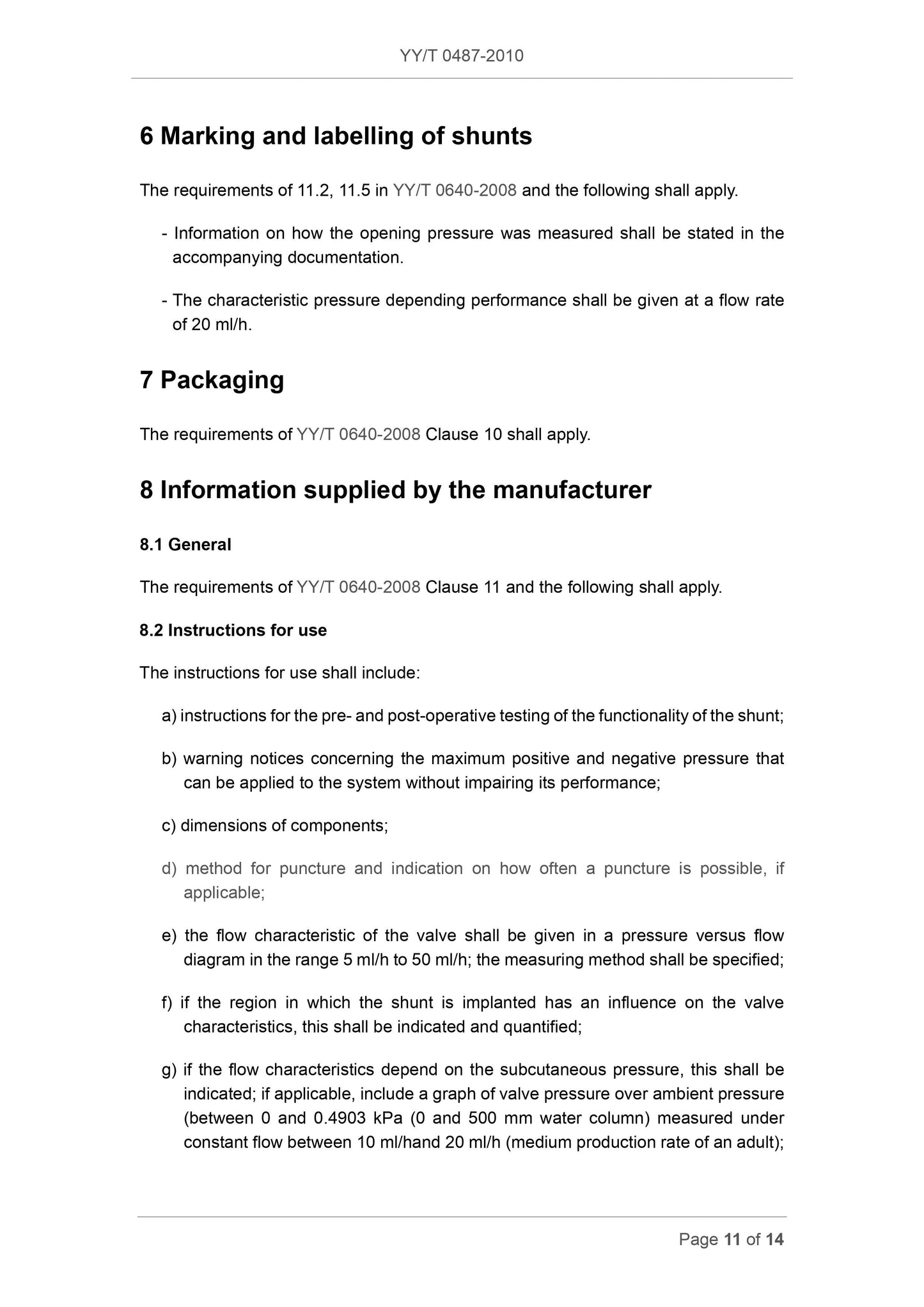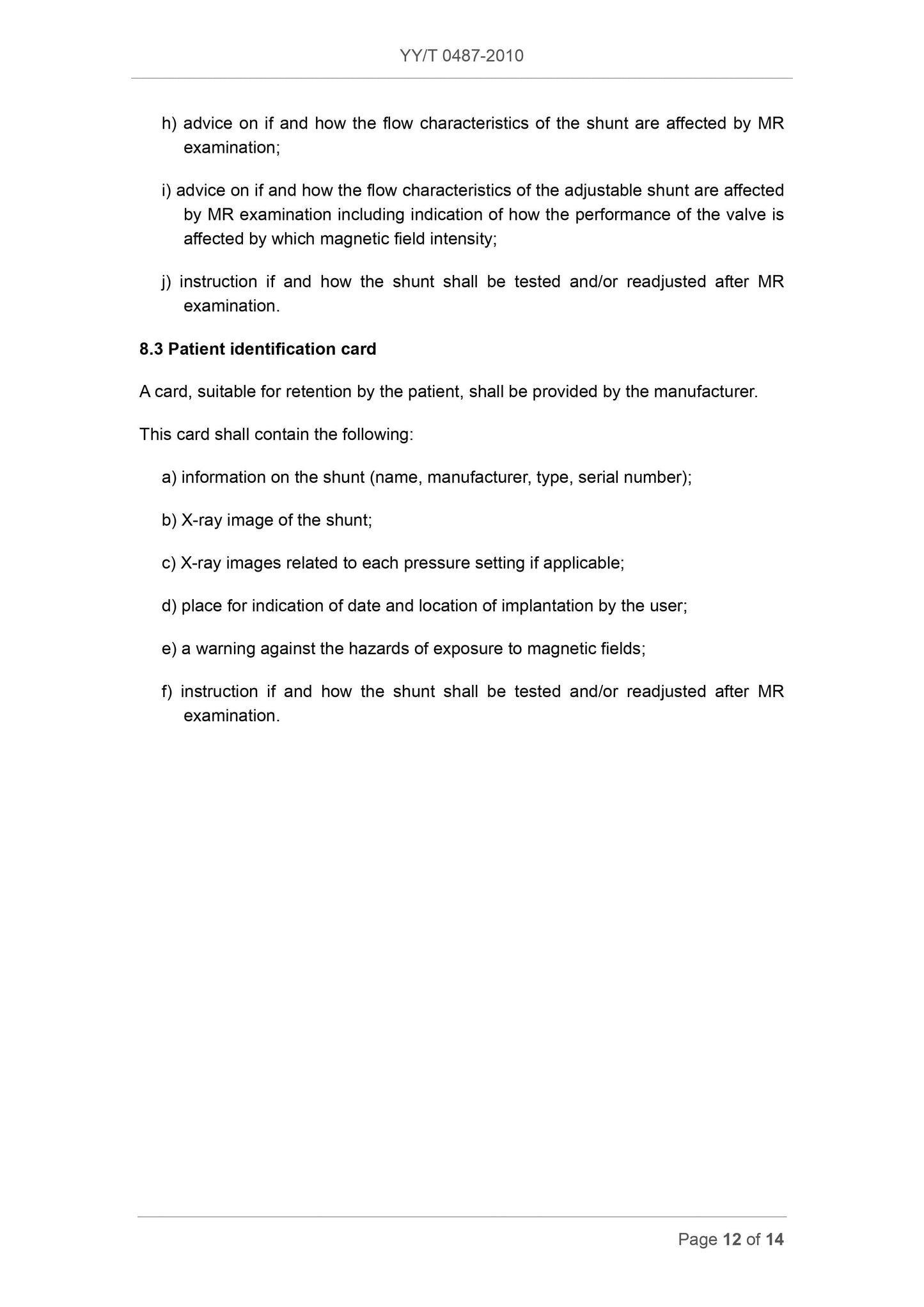1
/
of
12
www.ChineseStandard.us -- Field Test Asia Pte. Ltd.
YY/T 0487-2010 English PDF (YY/T0487-2010)
YY/T 0487-2010 English PDF (YY/T0487-2010)
Regular price
$150.00
Regular price
Sale price
$150.00
Unit price
/
per
Shipping calculated at checkout.
Couldn't load pickup availability
YY/T 0487-2010: Sterile, single-use hydrocephalus shunts and components
Delivery: 9 seconds. Download (and Email) true-PDF + Invoice.Get Quotation: Click YY/T 0487-2010 (Self-service in 1-minute)
Newer / historical versions: YY/T 0487-2010
Preview True-PDF
Scope
This Standard specifies safety and performance requirements for sterile, single-usenon-active hydrocephalus shunts and components. This includes the components
used in shunts, like valves, tubes and reservoirs.
This Standard gives no recommendation concerning the superiority of a certain type
of valve.
For manufacturing, it defines the mechanical and technical requirements. This
Standard defines the technical information of the valve, to be given by the manufacturer.
In respect to the different principles of the valve types, specific characteristics are
defined for each group as declared by the manufacturer.
The benefit of this Standard for the surgeon and the patient is to understand the
information given by the manufacturer and to obtain standardized information about
the performance of a well working product with new design characteristics. The benefit
for the manufacturer is to define the important requirements for shunts as a basis for
investigations during development as well as for quality control during manufacture.
This Standard does not apply to active implants for the treatment of hydrocephalus.
Basic Data
| Standard ID | YY/T 0487-2010 (YY/T0487-2010) |
| Description (Translated English) | Sterile, single-use hydrocephalus shunts and components |
| Sector / Industry | Medical Device and Pharmaceutical Industry Standard (Recommended) |
| Classification of Chinese Standard | C48 |
| Classification of International Standard | 11.040.40 |
| Word Count Estimation | 11,119 |
| Date of Issue | 2010-12-27 |
| Date of Implementation | 2012-06-01 |
| Older Standard (superseded by this standard) | YY 0487-2004 |
| Quoted Standard | YY 0334; YY/T 0640-2008; ASTM F2503-2005 |
| Adopted Standard | ISO 7197-2006, MOD |
| Regulation (derived from) | State Food and Drug Administration Notice 2010 No. 97 |
| Issuing agency(ies) | State Food and Drug Administration |
| Summary | This standard specifies the use of sterile disposable hydrocephalus shunts and components of safety and performance requirements. Including shunts used in components such as valves, piping and reservoir. This standard provides for the production of mechanical and technical requirements, and gives the valve manufacturer's technical information. Manufacturer to be based on various types of valve working principle, given the special characteristics of various types of valves. This standard does not apply to the treatment of hydrocephalus active implantable devices. |
Share
